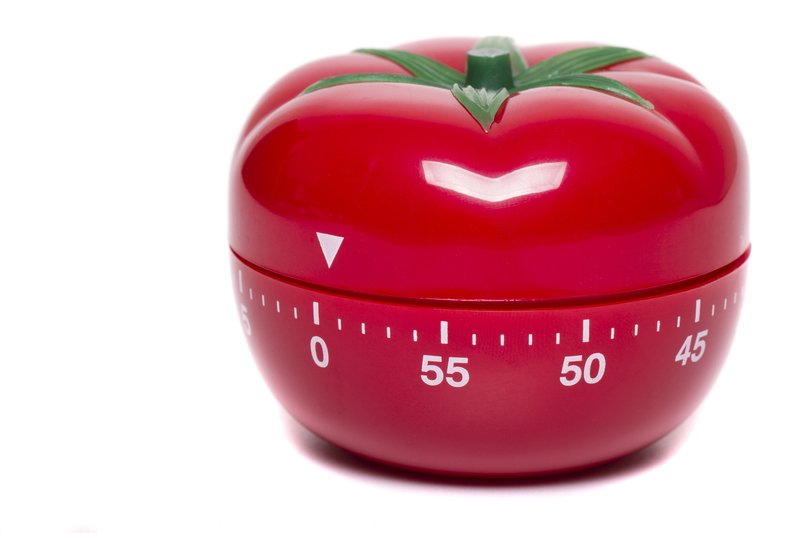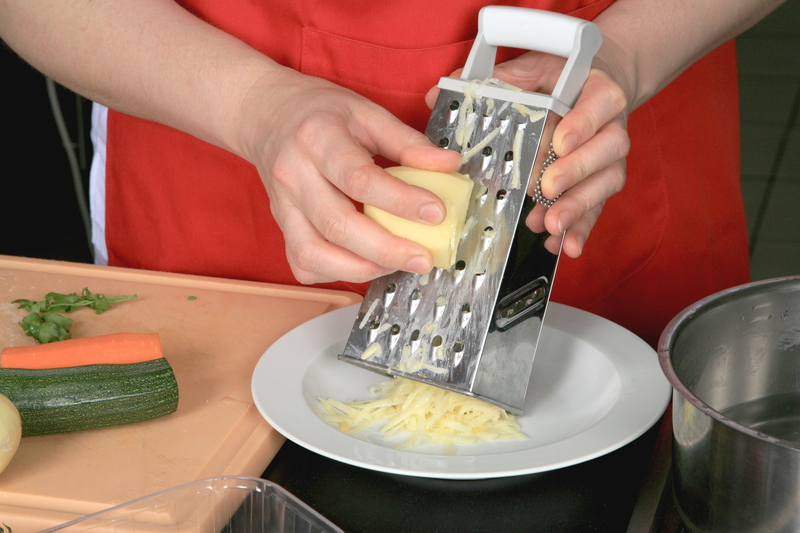Essential Curtain Cleaning Tips for a Breathtaking Home
Posted on 26/05/2025
Essential Curtain Cleaning Tips for a Breathtaking Home
Curtains are more than just decorative window coverings - they play a crucial role in defining the look and feel of a home. However, without proper care, even the most elegant curtains can accumulate dust, allergens, and unpleasant odors, making your interiors look dull and uninviting. If you wish to transform your living space into a fresh and stunning sanctuary, mastering the art of curtain cleaning is essential. In this comprehensive guide, you will discover the best methods and practices for maintaining spotless, vibrant, and breathtaking curtains that elevate your home's ambiance.
Why Curtain Cleaning is Essential for Every Home
Curtain maintenance goes far beyond aesthetics. Over time, curtains collect dust, pollen, pet hair, dander, and even mold spores, all of which can negatively impact indoor air quality. Clean curtains not only look beautiful but also promote a healthier living environment. Here are some compelling reasons to prioritize regular curtain cleaning:
- Enhances Interior Appeal: Crisp, fresh curtains instantly uplift any room's allure.
- Prevents Allergies: Removing dust and allergens helps keep respiratory issues at bay.
- Prolongs Fabric Life: Well-maintained curtains last longer and retain their color and texture.
- Eliminates Odors: Regular cleaning prevents unpleasant smells caused by trapped dirt or cooking fumes.
- Promotes a Healthier Home: Clean curtains contribute significantly to improved indoor hygiene.

Understanding Your Curtain Fabrics
Before diving into cleaning techniques, it's vital to identify your curtain's fabric type. Different materials require varying levels of care and specific cleaning methods. The most common curtain materials include:
- Cotton: Durable and generally machine washable, but may shrink if not handled correctly.
- Linen: Offers a sophisticated, airy look but can wrinkle easily and may need gentle handling.
- Velvet: Luxurious but delicate, often requiring professional cleaning.
- Silk: Highly delicate, typically demands dry cleaning to prevent damage.
- Polyester: Sturdy, easy to maintain, and often resistant to wrinkling and shrinking.
- Blended Fabrics: A mix of synthetic and natural fibers, care instructions depend on the ratio.
Always check the manufacturer's label for care instructions before cleaning any curtains.
Routine Maintenance: The Foundation of Curtain Cleanliness
Weekly Dusting
Frequent dusting prevents the gradual buildup of contaminants on curtain surfaces. Use these effective methods for dust removal:
- Vacuuming: Use a vacuum cleaner with a soft brush attachment to gently remove dust and debris.
- Beating: For heavier or easily detachable curtains, take them outside and gently shake or beat to dislodge dust particles.
- Lint Rollers: These work wonders on lighter fabrics or to spot-remove pet hair.
Monthly Freshening
To maintain freshness between deep cleans, try these curtain care tips:
- Steam Cleaning: A handheld steamer not only kills bacteria but also relaxes fabric fibers, reducing wrinkles.
- Air Out: Weather and space permitting, hang curtains outdoors for a few hours once a month to let fresh air circulate.
- Deodorizing: Lightly spritz with a fabric-safe deodorizer or a homemade vinegar-water solution for natural odor removal.
Deep Cleaning Curtains: Essential Methods Explained
Even with regular maintenance, curtains need periodic deep cleaning. The frequency depends on factors such as allergies, pets, smoking in the home, and location (urban or rural). Typically, a thorough cleaning every 3 to 6 months is recommended. Here are the best deep cleaning methods:
1. Machine Washing
- Preparation: Remove hooks, rings, or any detachable hardware. Shake off surface dust first.
- Choose the Right Setting: Use cold water and a gentle cycle to avoid shrinkage and fabric damage.
- Mild Detergents: Opt for fragrance-free or sensitive formulas to prevent residue or fabric irritation.
- Drying: Air-dry curtains whenever possible. Tumble drying can cause shrinkage or weakened fibers.
- Ironing: Press while still slightly damp at the correct temperature for a crisp finish.
2. Hand Washing
- Best For: Delicate fabrics like lace, linen, or loosely woven blends.
- Method: Submerge curtains in a bathtub or large basin with lukewarm water and mild detergent.
- Gentle Swish: Gently agitate the water by hand to loosen dirt.
- Rinse Thoroughly: Swish until water runs clear to avoid soap residue.
- Squeeze Gently: Press (don't wring) fabric to remove excess water before hanging to dry.
3. Dry Cleaning
- When to Use: Fabrics labeled 'Dry Clean Only' (e.g., silk, velvet, some polyesters)
- Professional Service: Take your curtains to a reputable dry cleaner to prevent shrinking, color bleeding, or permanent damage.
- At-Home Dry Cleaning Kits: For some materials, at-home kits are available, but always check compatibility first.
4. Spot Cleaning
- Quick Response: Attend spills or stains immediately for best results.
- Test First: Try your chosen solution on an inconspicuous corner to check for colorfastness.
- Blotting: Use a soft cloth to gently blot the stain--never rub, to avoid spreading it.
- Mild Solutions: A mix of mild soap and lukewarm water works for most stains. For tougher stains, consider specialized fabric stain removers.
Specialized Advice for Different Curtain Types
Sheer Curtains
Sheer and voile curtains are delicate and best cleaned with a soft touch. Hand wash or use your washer's "delicate" cycle with mild detergent, and always air-dry by hanging. Avoid wringing and direct sunlight (which can cause fading).
Blackout Curtains
Most blackout curtains contain a synthetic coating that can be damaged by harsh detergents or vigorous washing. Vacuum them regularly and spot clean with a damp cloth. Check the care label - some are machine washable, but cold water and mild soap are a must.
Thermal Curtains
Thermal or insulated curtains may have a foam or rubber backing. Avoid machine washing or heat, which can degrade the backing. Instead, spot clean and vacuum both sides.
Heavy Drapes
For velvet, brocade, or lined curtains, professional cleaning is usually recommended. If cleaning at home, always test detergents on a hidden area.
Pro Tips for Maintaining Curtain Freshness
- Rotate Curtains: Swap curtains between rooms occasionally to balance exposure to sunlight and wear.
- Invest in Linings: Curtain liners protect decorative fabric from dust, sunlight, and direct staining.
- Avoid Smoking Indoors: Tobacco smoke clings to fabric, requiring more frequent cleaning.
- Use Tiebacks: Prevents curtains from brushing against the floor and picking up dirt or pet hair.
- Regular Window Cleaning: Clean windows before rehanging curtains to keep them fresher, longer.
Eco-Friendly Curtain Cleaning Tips
For environmentally conscious households, >stronging eco-friendly cleaning solutions and conserving water is key. Some tips include:
- Natural Detergents: Use plant-based or biodegradable laundry soaps and avoid harsh chemicals.
- Baking Soda: A natural deodorizer, sprinkle lightly before washing to neutralize odors.
- White Vinegar: Acts as a fabric softener and removes lingering odors. Add a quarter cup to the rinse cycle.
- Line Dry: Harness the gentle power of the sun and breeze--air drying is best for both fabrics and the planet.
Common Curtain Cleaning Mistakes to Avoid
- Ignoring Care Labels: Always read and follow your curtain's care instructions.
- Excess Detergent: Too much soap can lead to residue buildup, stiffening fabric, and attracting more dirt.
- Wringing Out Water: Twisting curtains, especially heavy or delicate ones, can stretch or damage fibers.
- Direct Sunlight Exposure: Drying in intense sun can fade colors; choose shaded outdoor spaces where possible.
- Overdrying: Leaving curtains in a hot dryer can cause shrinkage or melting (in synthetics).

Frequently Asked Questions on Curtain Cleaning
How often should curtains be cleaned?
Ideally, you should vacuum or dust your curtains weekly. Deep cleaning is recommended at least every 3 to 6 months. However, households with pets, allergy sufferers, or smokers may require more frequent cleaning.
Can you wash all curtains at home?
Not all curtain fabrics are suitable for home washing. Check the care label; some require professional dry cleaning, especially silk, velvet, and blackout varieties with special coatings.
Will cleaning curtains remove all stains and odors?
Regular cleaning significantly reduces stains and odors. However, old or deeply set stains may not come out completely. For persistent issues, consult a professional curtain cleaner.
Conclusion: Transform Your Home with Immaculate Curtains
Incorporating these essential curtain cleaning tips into your household routine will dramatically boost the beauty and atmosphere of your home. Whichever type of curtain or drapery you own, regular care is the foundation of a breathtaking home environment. Not only will your curtains dazzle guests, but you'll also enjoy a cleaner, healthier living space for your loved ones.
Taking a few minutes to dust, vacuum, or spot wash curtains can make all the difference. And when it's time for a deep clean, using the right techniques preserves the color, texture, and overall appeal of your window dressings - ensuring your home remains as stunning and inviting as you dream it to be.
For a truly breathtaking home, never overlook the magical impact of clean and well-cared-for curtains!




